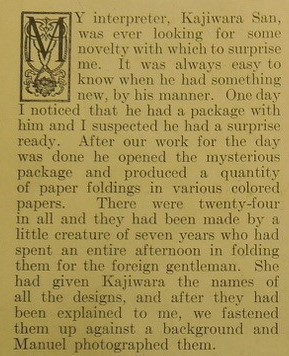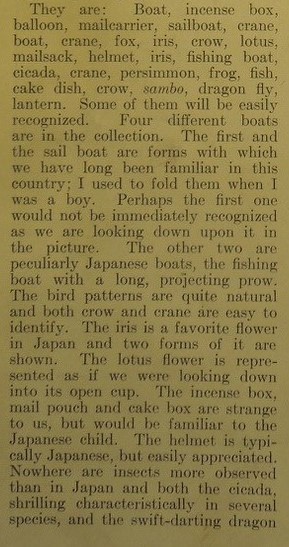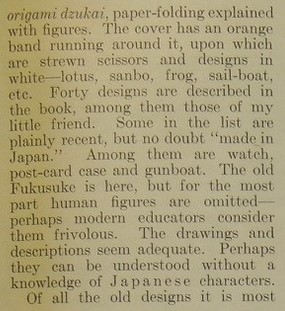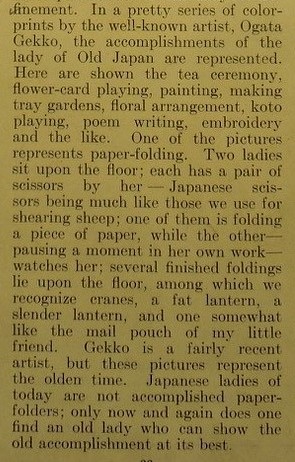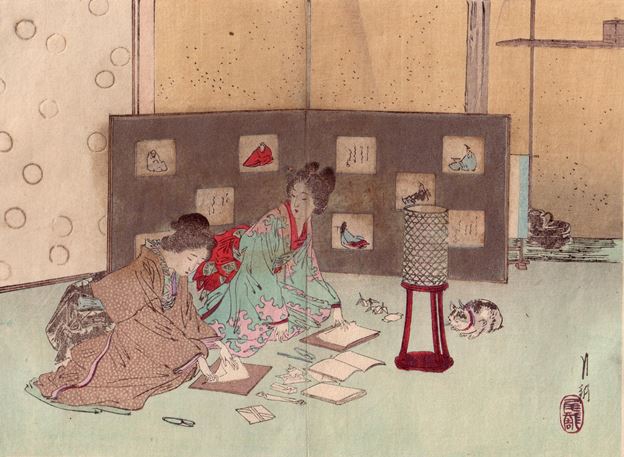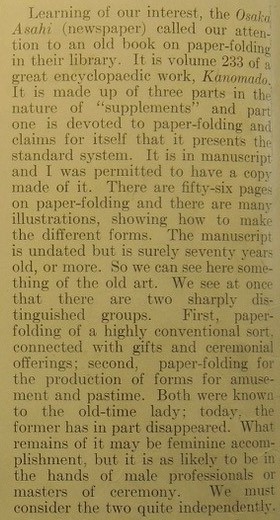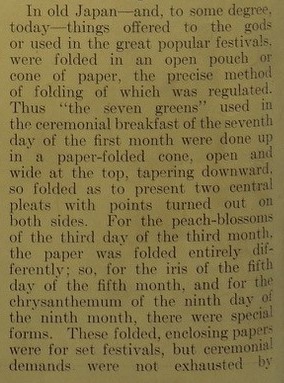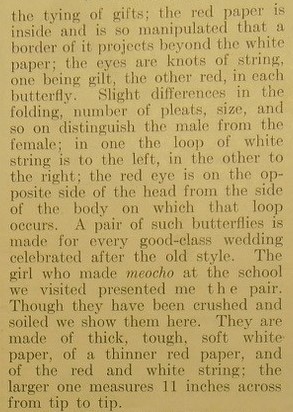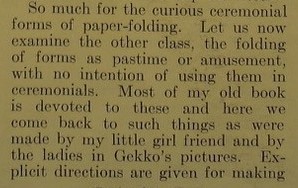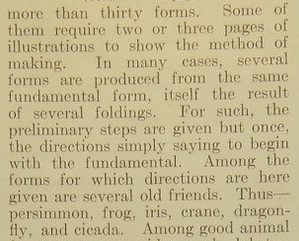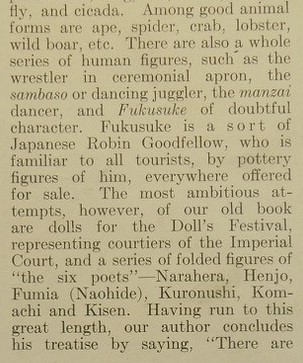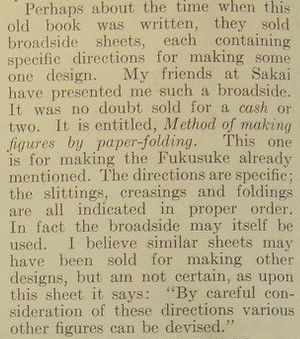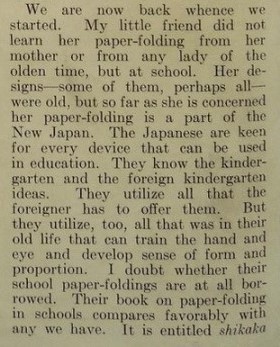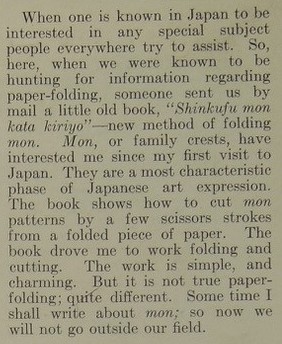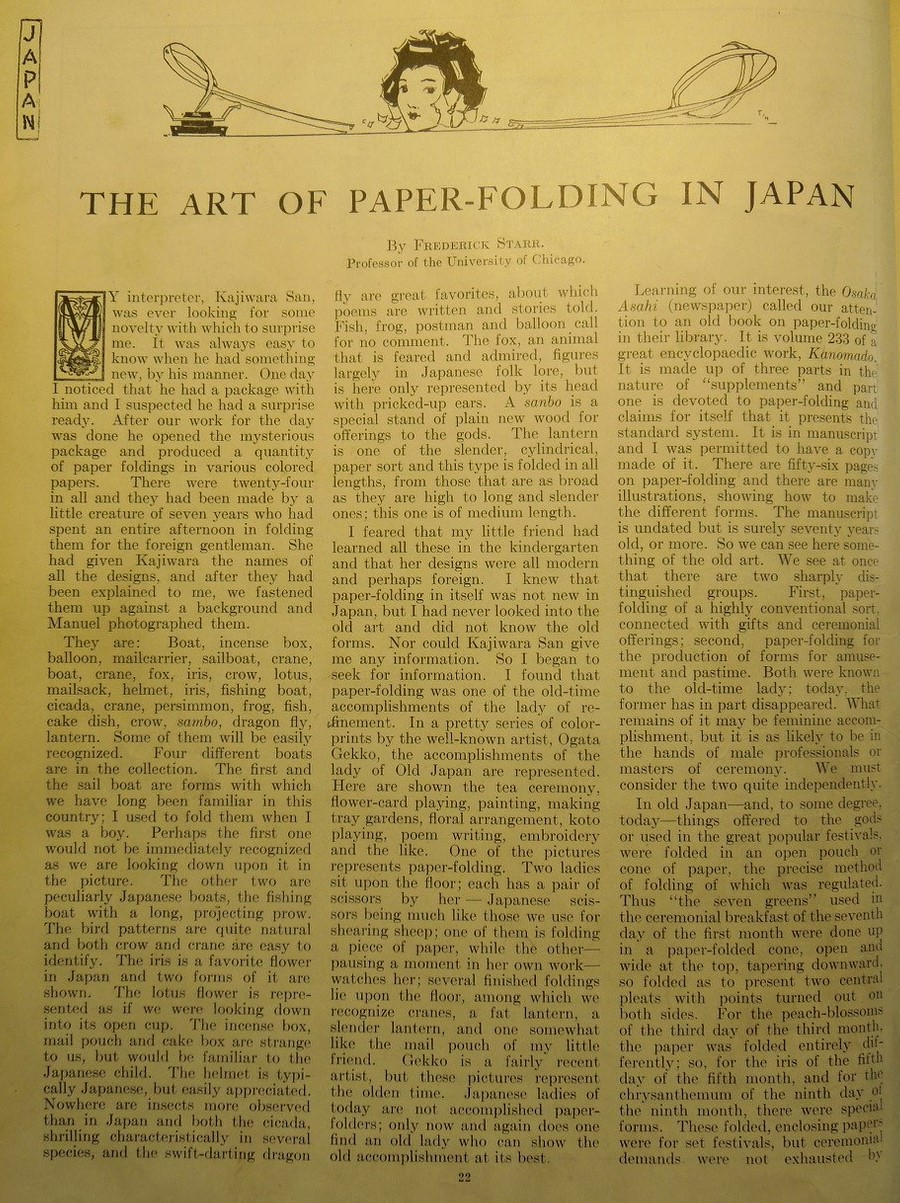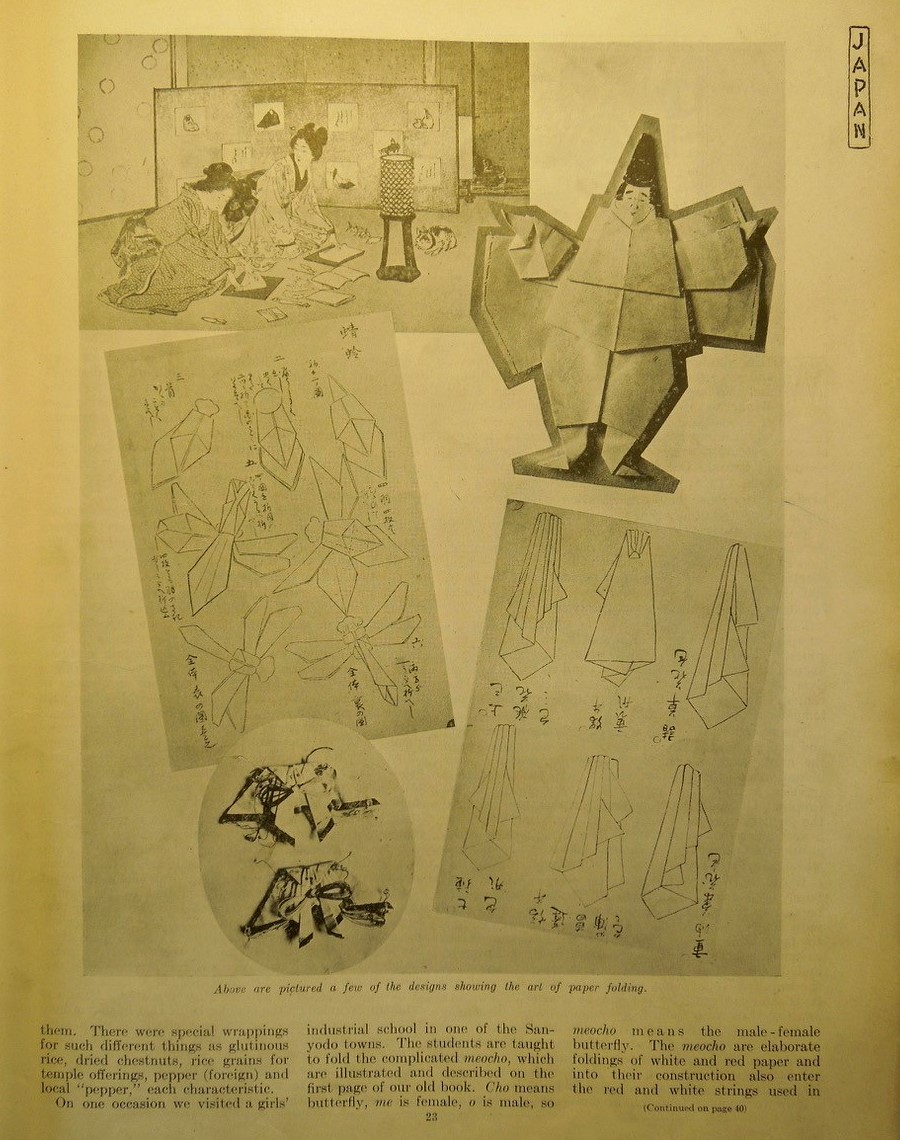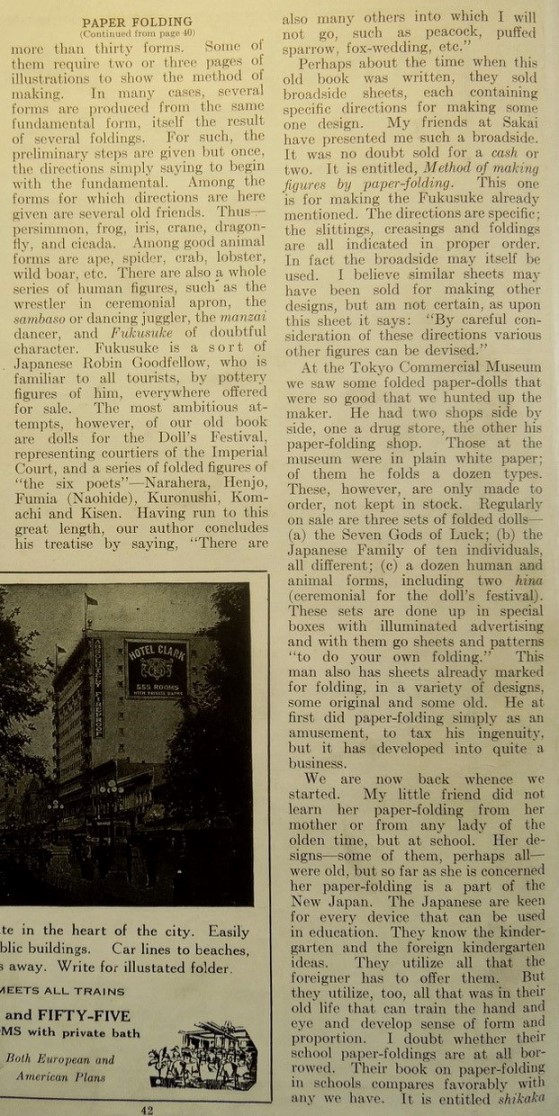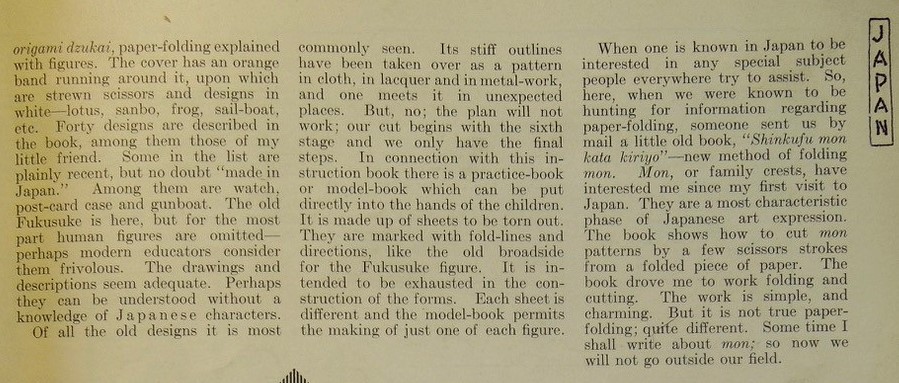| The Public Paperfolding History Project
Last updated 21/8/2024 x |
|||||||
| The Art of Paper Folding in Japan by Frederick Starr, 1922 | |||||||
| 'The
Art of Paper Folding in Japan' is a magazine article
written by Frederick Starr and published in the issue of
the tourist magazine 'Japan' for October 1922. My thanks
to Laura Rosenberg for providing me with a copy of this
article. This work is mentioned in Gershon Legman's 'Bibliography of Paperfolding' which was published in 1952.
********** Analysis This analysis does not mention everything written in the article. Inter alia, the article refers to ... *** A Box of 24 Paperfolds Starr writes about a box of 24 paperfolds folded for him by a seven year old girl. The list of designs is interesting because of its early date. Later on in the article Starr says that all the designs can be found in the book 'shikaka origami dzukai'.
He mentions a photograph of the designs but unfortunately this was not included when the article was printed. The lack of illustrations means that identification of the designs is necessarily uncertain. The designs mentioned are: Four boats: The first two 'with which we have long been familar in this country', ie in the USA, are probably the Paper Boat and the Boat with Sail. The 'fishing boat with a long projecting prow' is probably the Chinese Junk. The other cannot be identified. Incense box: Unidentifiable Balloon: Probably the Waterbomb Mailcarrier (also called postman): Probably the Postman Two cranes: One probably the Paper Crane, the other unidentifiable Fox: 'here only represented by its head with pricked up ears' so probably the Fox Face Two irises: Unidentifiable Two Crows: Unidentifiable Lotus: Probably the Lotus Mailsack (also called mail pouch): Unidentifiable Helmet: Probably the Kabuto Cicada: Probably a variant of the Cicada Persimmon: Probably the Tachibana Frog: Probably the Blow-up Frog Fish: Unidentifiable Cake Dish: Unidentifiable Sambo (also sanbo): Probably the Sanbo Dragon fly: Unidentifiable Lantern: Probably the Long Lantern This makes 25 designs, so perhaps one of the designs mentioned twice in the list (ie cranes, crows or irises) has been duplicated. ********** A print by Ogata Gekko Starr then talks about a print by Ogata Gekko:
The image of this print which accompanies the article is not of sufficient quality for the details of the paperfolds to be discerned. I am indebted to David Humphries of http://www.ogatagekko.net/ for providing me with a higher resolution image. He says 'this print is part of a small format album titled Nihon Jo Reikshiki (loosely Etiquette for young Women). The album itself was published by Matsuki Heikichi in 1898. This album was presented in "Dai San-kai Naikoku Kangyo Hakuran-kai" (the 3rd Trade Exposition in Japan) and received the excellence award for the specialty item art printings.'
More information about the paperfolds found in this picture can be found on the page about Paperfolding in the Prints of Ogata Gekko. ********** The Kan No Mado ms Starr explains how he was shown, and allowed to have copied, the Kan No Mado ms.
********** Ceremonial paperfolding - tsutsumi
********** Ceremonial paperfolding - ocho and mecho
********** Recreational paperfolding
I do not think the sentence 'Among the forms for which directions are here given are several old friends' should be read as indicating that the designs mentioned earlier in the article were necessarily folded by the same method, only that the subjects were the same. Starr describes the contents of the Kan No Mado at greater length, particularly mentioning the Fukusuke figure.
Where the Brossman translation mentions 'peacock, praying mantis, lily of the valley, globe fish and fox wedding' Starr gives 'peacock, puffed-sparrow, fox-wedding etc'. I do not know which translation is to be preferred. ********** Broadside sheets
********** A book called 'shikaka origami dzukai' Starr mentions a book called 'shikaka origami dzukai' (paperfolding explained with figures) which he says contains instructions for 40 designs, including those given to him by the 7 year old girl (see above).
********** A book 'shinkufu mon kata kiriyo' Starr also refers to a book 'shinkufu mon kata kiriyo' about the folding and cutting of mon.
********** The article in full
**********
**********
**********
********** |
|||||||

